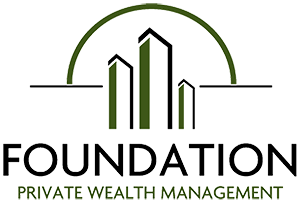What's Going on with these Trumped Up Markets?
Submitted by Foundation Private Wealth Management on March 3rd, 2017In a recent interview with CNBC, after releasing the Berkshire annual report, Warren Buffet was quoted as saying:
“Mixing politics with investment strategies would be a big mistake”
This statement could not be more meaningful than at a time like this, when the US has just elected the bombastic Donald Trump. Also, in Europe, the U.K. is dealing the outcome of its voter’s decision to exit the EU and, with a wave of EU member elections on the horizon, the populist tidal wave that has been forming could gain steam.
These issues will all have some impact on the markets and could illicit sharp movements as we continue through 2017, and beyond, in ways that we have not traditionally seen. We saw in 2016, as market participants digested these political tremors, the focus continually returned to corporate profitability and growth. This was never more dramatic than during the US election where, by the time we published our messaging to clients about the markets’ reaction, both bonds and equities had virtually completed a full 180° from the spiral that started as the inevitability of Trump’s win became apparent. Bonds went down, equities recovered, and it all happened in a day that started very bleak.
These events have come to dominate the psyche of the investor, to the point that the anticipation of an outcome dictates the course of investing decisions. This had certainly not been the case in the past and, as Warren Buffet pointed out in the above quote, it is not a good way to build investment strategies.
With all this in mind, what then should we base our investment strategies on and what is the outlook going forward with the US markets?
In the US, which is still the dominant economy on the planet and where we continue to hold our largest portfolio equity weightings, despite a reduction in this weight through 2016, there are two key investment themes that will likely play out through 2017. The first is related to the economic policies that Trump is looking to bring into law, which are highly likely given the republican control of all branches of the government. These policies are:
- Infrastructure spending
- Deregulation across the board
- Reduction in taxes
Notice that this list is not who he will choose to fill his cabinet, or replace because something happened, or which Supreme Court judge he will select… These are political and over a reasonable period have no bearing on our portfolios. The three highlighted items will have an impact and they all have one major theme: all of these economic policies will create expansion in the economy, leading to earnings growth and expansion of stock prices. This, in fact, has already started to happen through the so called “Trump Rally”, as equity markets anticipate this expansion.
The second major investment theme that we will see play out in 2017 within the US is the Federal Reserve continued upward movement in interest rates. The tightening up in rates has really been in effect since the tapering of the quantitative easing that began several years ago. We have also had some intermittent rate increases over the last couple of years, but nothing like what the markets have expected as the dovish Fed Governor Janet Yellen has preferred to remain cautious, which might have been the best course of action, in hindsight. That said, in 2017 the markets are widely expecting 3 rate increase of 25 basis points (0.25%) each, but depending on how the stimulus flows through in coming months, as Trump moves forward with his agenda, we could very easily see a shock to the upside with more rate increases than expected.
The change in interest rate policy will have its biggest effect on longer-dated government bonds, predominantly in US, but other economies like Canada that are tied to the American markets will feel a similar, though likely muted effects, in the longer bond markets too. Overall, this will create a somewhat negative environment for bonds, which is why we have chosen allocate capital in shorter-duration fixed income portfolios that have a heavier weighting to credit risk as opposed to interest rate risk. With the greater weighting to credit risk, we are focusing more on the ability of a lender to pay back its debts, reducing our exposure to rising rates to some extent.
The other area that could be an unintended casualty of rising rates is dividend paying stocks. In the endless quest for increased yield, these stocks have become proxies for bonds. This is an area to be conscious of, as in this case someone utilizing this strategy could be facing interest-rate risk that they may not have been aware of, plus the equity risk. If equities decline, it could have a very negative impact on the strategy, as typically these investments are being purchased for their perceived safety.
Overall, we feel that the expansionistic policies that are very likely to be implemented through the first year of the Trump Presidency will continue to stoke US equities. These economic policies will filter through the system, impacting the top and bottom lines of income statements, which is tangible for us as investors. Looking forward, with all things remaining equal, the likely end to the US rally will come at a point where inflation (yes, I said inflation!) becomes too problematic and rates have to spike to curb it off, but I do not think this is on the horizon yet and many things could change between then and now.


Comments
Post new comment